Learn how to make a simple Sumac Substitute for when a recipe calls for a small amount of Sumac spice and you have none on hand. "Sumaq" or "sumach," as it's pronounced in the Middle East, is a crimson-colored tart powder, used to elevate many popular Middle Eastern dishes including kofta kebabs and Lebanese Fattoush Salad.
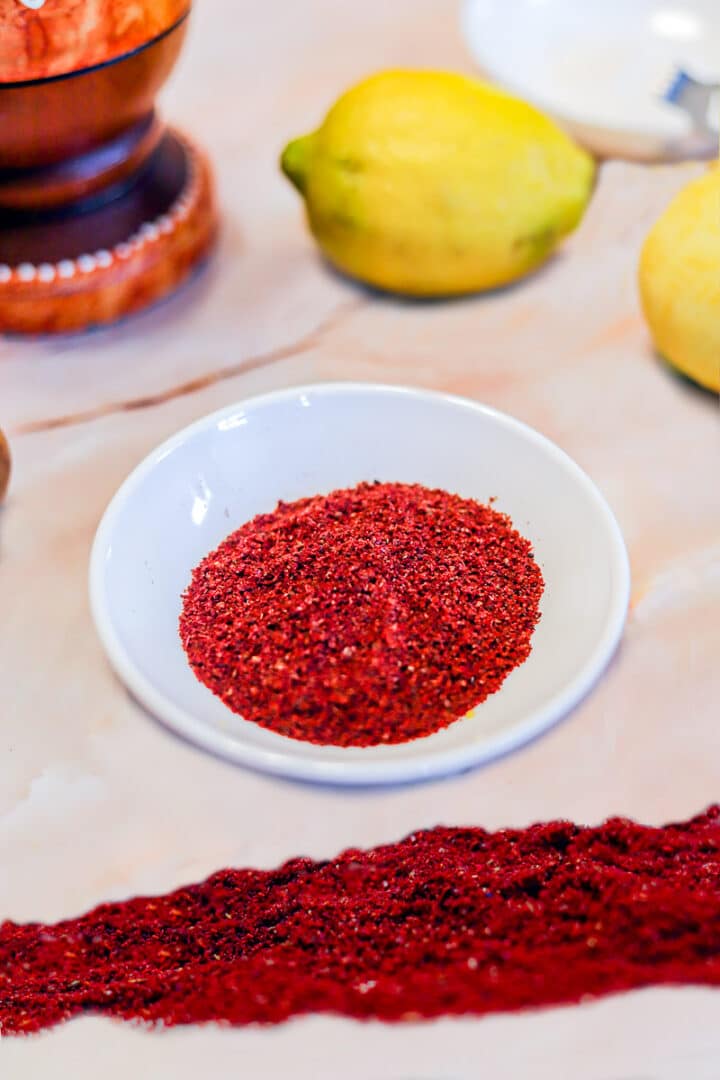
In Middle Eastern cooking, sumac is commonly sprinkled on vermicelli rice, Lebanese Hummus, and beef kofta kebabs. It is also used to flavor marinades and salad dressings.
These days, it's even used in desserts! However, it's not always easy to find, except in Middle Eastern markets, which is why you may be searching for a Sumac alternative.
I'll show you how to make a quick and easy sumac spice substitute that can add a similar flavor to your recipes including meats, grains, and fresh or grilled vegetables.
Jump to:
😍 Why You'll Love This Recipe
- This is a super simple recipe using ingredients you most likely have at home!
- This recipe can be prepared at the last minute when you don't have time to spare.
- This Sumac substitute is just that, it's an alternative. It will not add the same vibrant color or impart the same rich flavor sumac provides so be sure to keep the real thing stocked in your pantry!
🛒 What You Need For This Recipe

🔖 Ingredients & Substitutions
- Lemon Zest: Lemon zest not only replicates the tartness in sumac but also the texture.
- Sea Salt: The sea salt mimics the saltiness of sumac powder.
- Citric Acid: Citric acid is usually the missing ingredient in most Sumac Substitute recipes. The lemon zest alone is not enough to duplicate the tartness. However, a little citric acid goes a long way. In this case, all you need is approximately 1/16 of a teaspoon, maybe even less.
🍋 How to Sumac Substitute
Step 1: Mix lemon zest, salt, and citric acid. Pound the mixture with a mortar and pestle, if necessary, to combine the flavors.

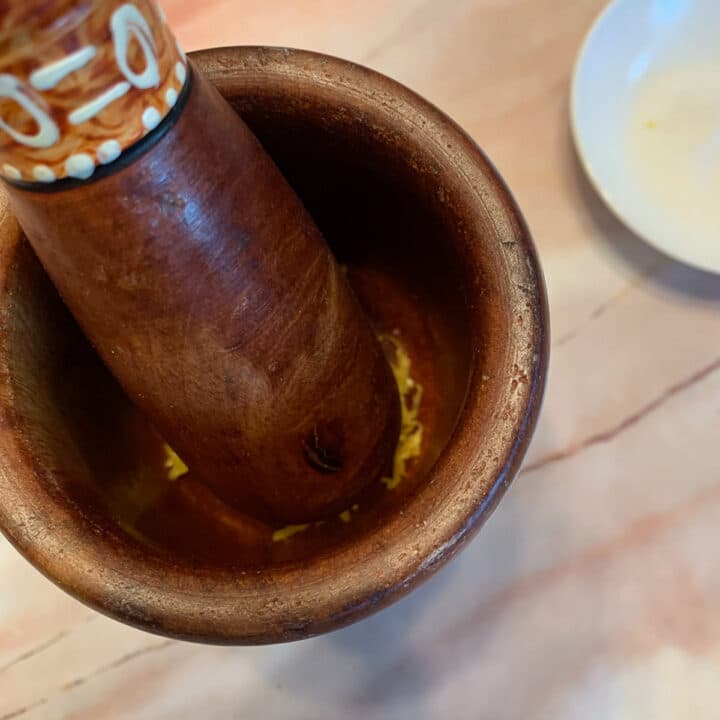
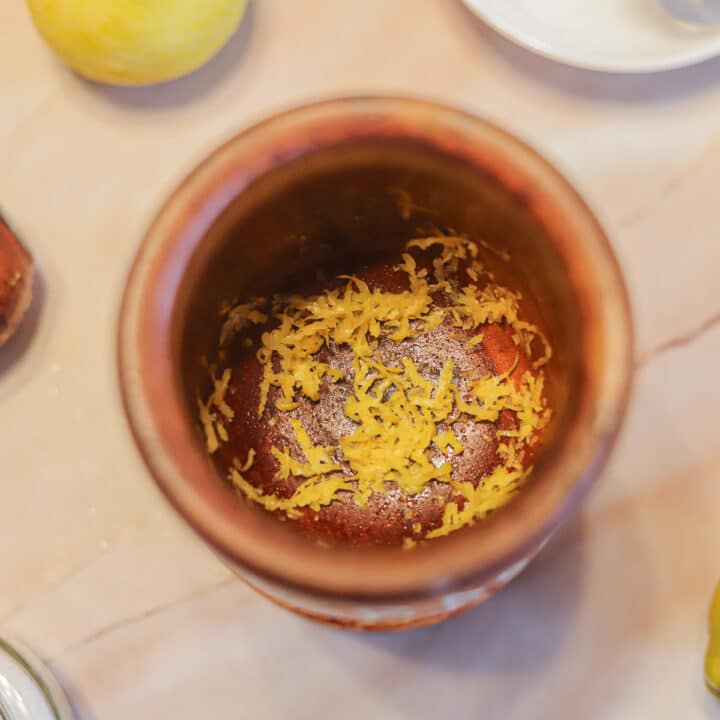
Step 2: Use this sumac substitute right away, or freeze until needed. Or better yet, make it in small batches as needed.
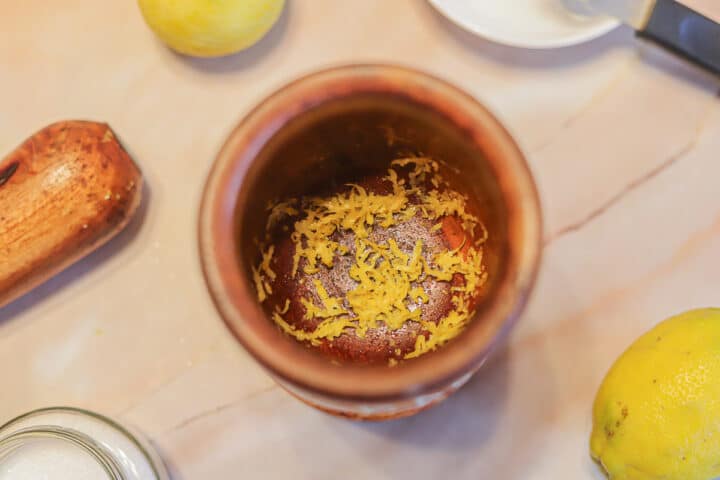
🤷🏻♀️ Recipe FAQs
Sumac berries are red, vibrant berries that grow in clusters or bobs on the sumac plant. There are hundreds of varieties, fourteen of which are native to North America.
Some sources say that the shrubs can be found on all seven continents. The most popular varieties include Staghorn Sumac, Smooth Sumac, Evergreen Sumac, and Fragrant Sumac.
The sumac bobs are used to make a coarse powder which is used as a meat rub, sprinkled over rice dishes, and even used to flavor drinks. It is a popular ingredient in Iraq, Iran, Africa, and many other countries and is commonly used in Middle Eastern cuisine.
Ground sumac berries have a mouth-puckering tart flavor that some describe as peppery. However, I personally disagree. To me, it is sour, salty, and tangy, not peppery at all! Sumac can be used as a souring agent in your favorite recipes!
Unless you cook Middle Eastern and Mediterranean food often, chances are you can turn your cupboards upside down but won't find this unique spice that brings so many recipes to life! Here are some typical sumac spice substitutes.
• Lemon zest
• Lemon zest mixed with salt
• A combination of lemon zest, salt, and black pepper
• Tamarind (although tamarind is sour enough, it is not salty and does not have the right texture.
• Za'atar is a spice blend made with a combination of herbs and spices, including thyme and ground sumac. Zaatar can work in some instances, when used for a rub or mixed in olive oil to make a marinade, for example. However, it wouldn't work when sumac is a key ingredient in the recipe, for example, Kathryn's blackberry sumac scones.
• My Sumac Substitute recipe is a combination of 3 ingredients: lemon zest, sea salt, and citric acid. Citric acid, in my opinion, makes all the difference.
• All parts of the sumac plant (except for the roots) are used to make clothes dye.
• The fruit clusters of Staghorn Sumac attract all kinds of birds and are a vital source of nourishment, especially in the winter months.
• Beekeepers light the dried sumac berry clusters and use them as their smokers.
• But the most popular use for sumac spice is to flavor food. It is found in many Middle Eastern and Mediterranean recipes and is starting to pop up in all kinds of recipes! It is commonly mixed with vinegar or lemon juice and olive oil and used to marinate beef and chicken.
Sumac shrubs with red berries are edible, while the varieties with green or white berries are not.
Many people mistake edible sumac berries for poison sumac, my husband included. Toxicodendron vernix is a species of poison oak. It contains a toxic oil called "urushiol." This oil causes dermatitis when it comes into contact with the skin and can be found in every part of the plant.
👩🏼🍳 Pro Tips
- This sumac spice alternative is not meant for a permanent swap for sumac powder. It's meant to be used in a pinch when a recipe calls for a small amount of sumac.
- Store sumac powder in the freezer, especially if you don't use it very often. Some sumac powders have more moisture than others and tend to spoil when stored like the rest of your spices.
- Sumac spice comes in a variety of shades from bright red, to a deep shade of purple. The grind also varies from fine to coarse. The color or texture, however, does not affect the flavor.

Would you like to save this recipe?
🍗 How to Use Sumac Spice in Recipes
Barbecued Sumac Chicken

This Barbecued Sumac Chicken recipe is the bomb! The sumac in the marinade lends a beautiful, tangy flavor, while the garlic, thyme, and crushed red pepper flakes do their own magic!
Lamb Shish Kabobs

This easy Lamb Shish Kabob recipe features tender morsels of marinated lamb with lots of colorful veggies, including bell peppers, onions, and mushrooms, seasoned and sprinkled with sumac.
Za'atar Substitute
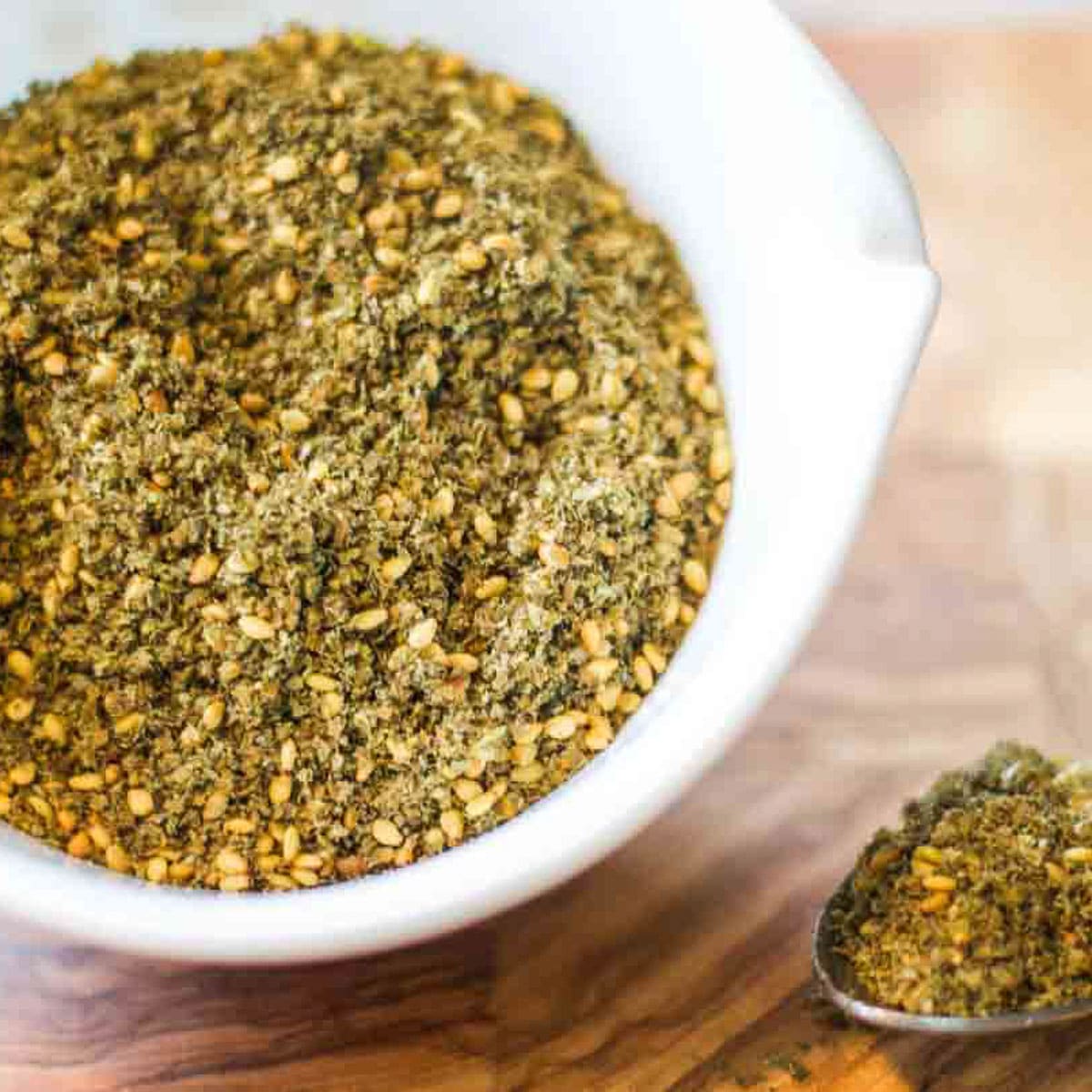
A sprinkle of the Za'atar Substitute really wakens the flavor of food. Sprinkle some Za'atar on Low Carb Seed Crackers or liven up your Bucatini Cacio e Pepe. The possibilities are endless!
Musakhan | Sumac Chicken and Onions on Flatbread

This Musakhan Recipe is an exotic Palestinian dish that you really should try at least once. Succulent Sumac Chicken served on toasted flatbread with caramelized sumac and Baharat onions and toasted pine nuts.
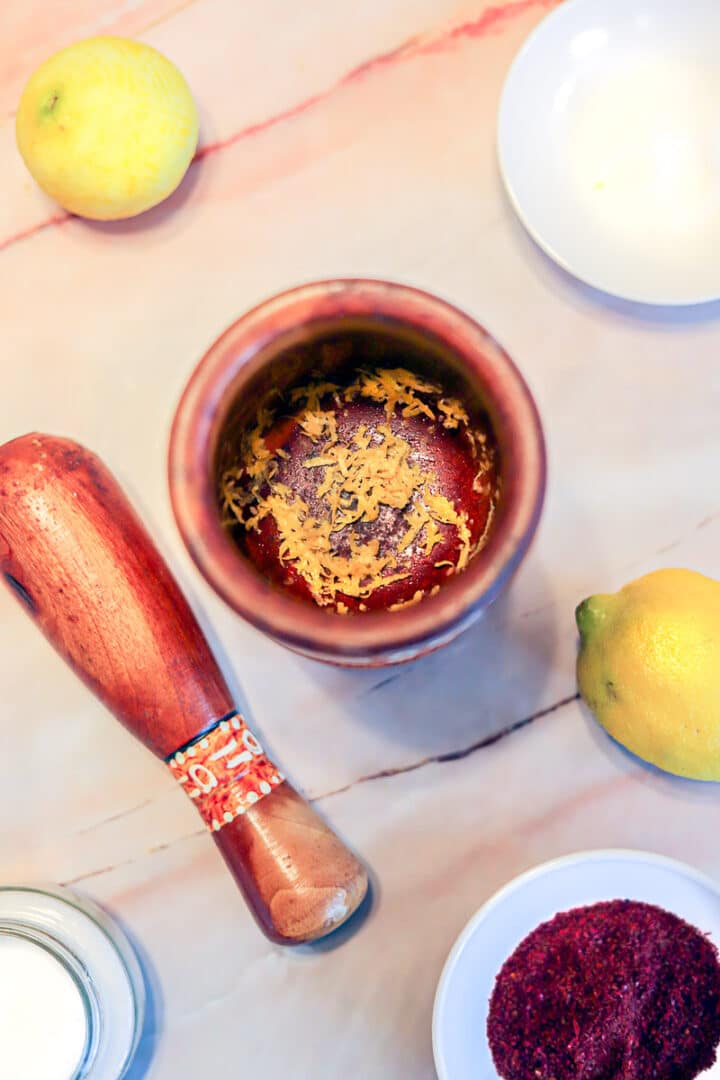
If you enjoyed learning about this sumac alternative, you may also be interested in the following spice blends: Corned Beef Seasoning, Biryani Spice, Pork Rub, and Zaatar Substitute Spice Blend.
🍔 More Sumac Recipes
If you enjoy this sumac spice substitute post, check out these other sumac recipes!
📖 Recipe
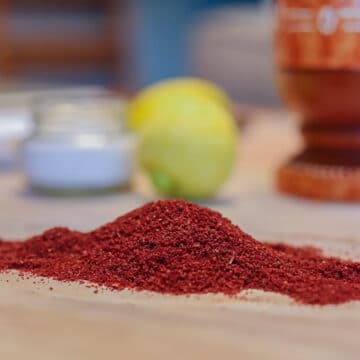
The Best Sumac Substitute Option
Ingredients
- 1 medium lemon (zested)
- ⅛ teaspoon sea salt
- 1 pinch citric acid
Instructions
- Mix lemon zest, salt, and citric acid. Pound the mixture with a Mortar and Pestle, if necessary, to combine the flavors.
- Use right away, or freeze until needed. Or better yet, make it in small batches as needed.
Notes
- This sumac substitute recipe is not meant for a permanent swap for sumac powder. It's meant to be used in a pinch when a recipe calls for a small amount of sumac.
- Sumac powder should be stored in the freezer, especially if you don't use it very often. Some sumac powders have more moisture than others and tend to spoil when stored like the rest of your spices.
- Sumac comes in a variety of shades from bright red, to a deep shade of purple. The grind also varies from fine to coarse. The color or texture, however, does not affect the flavor.

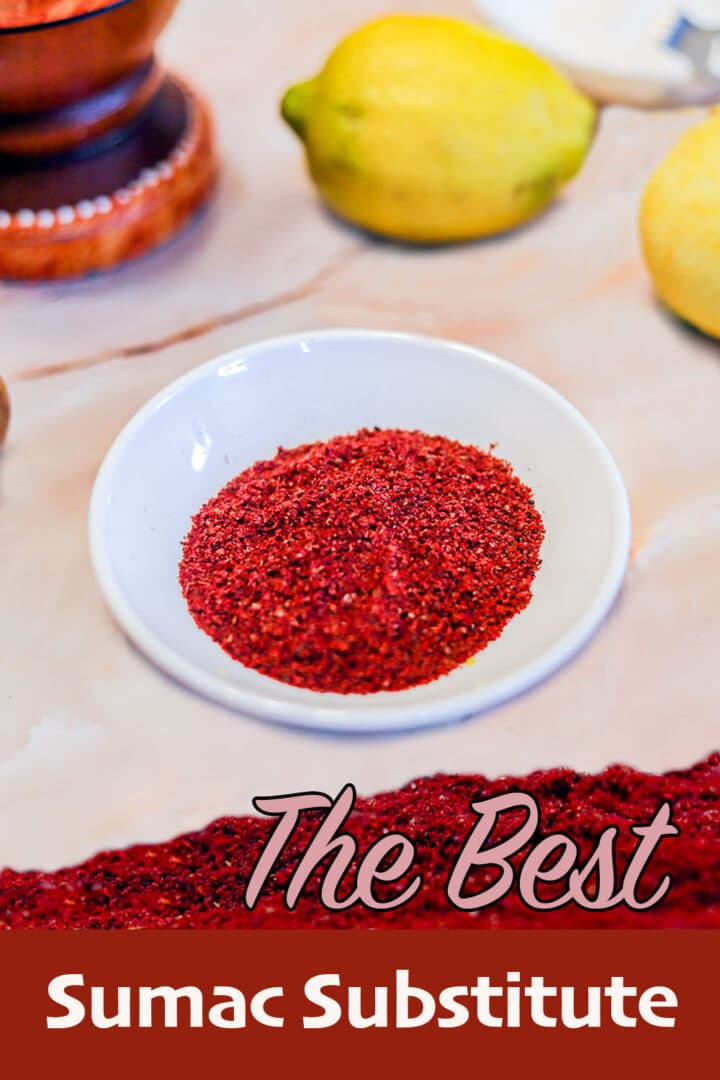
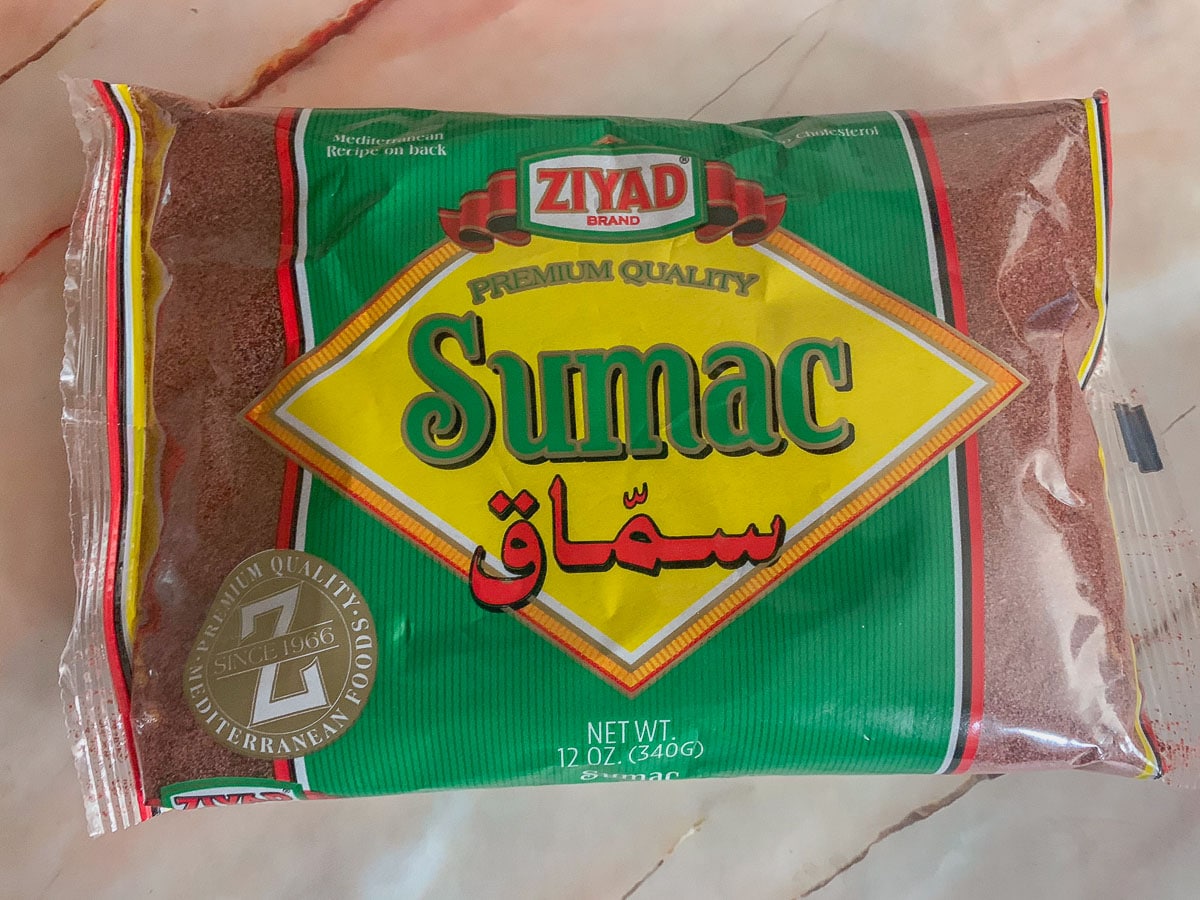
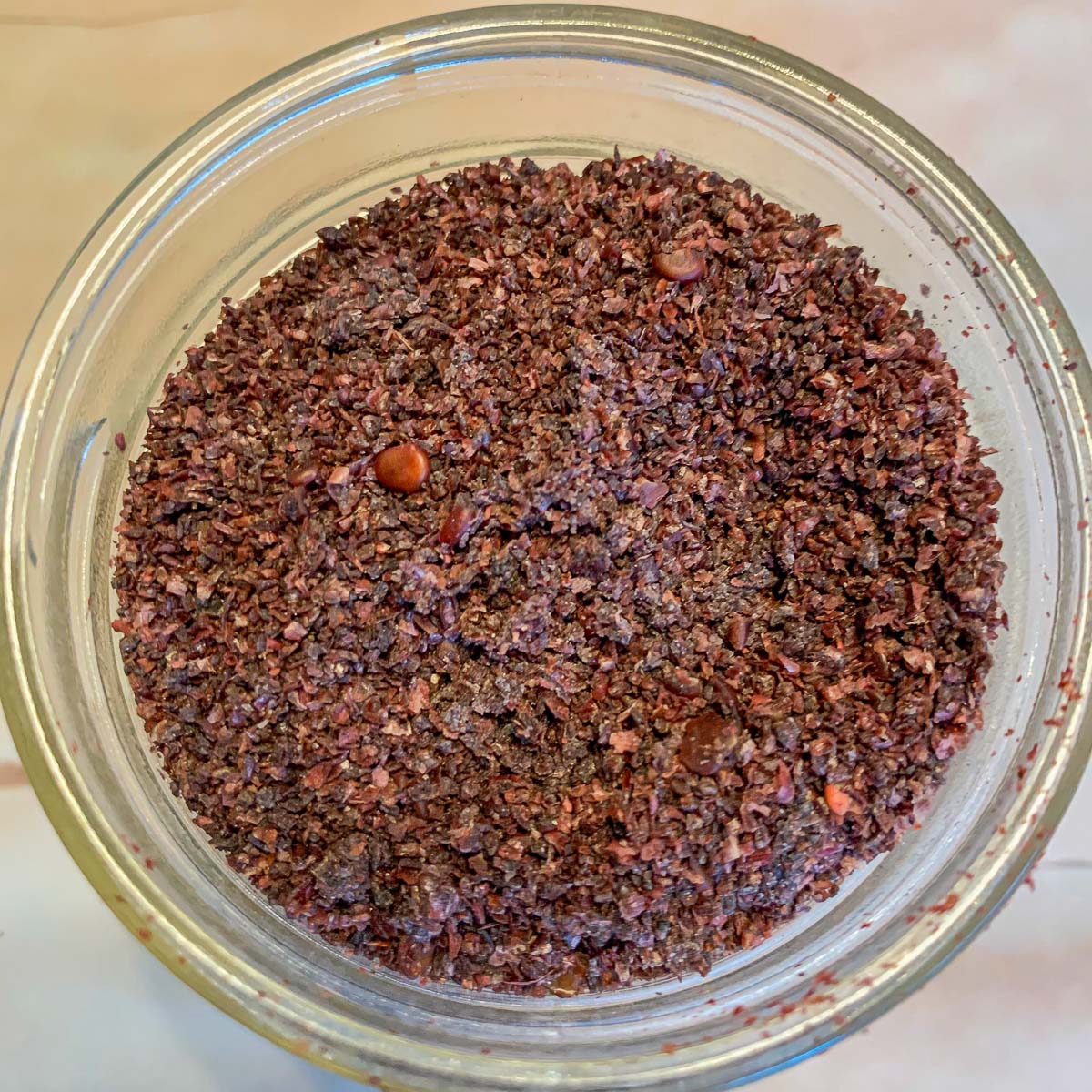
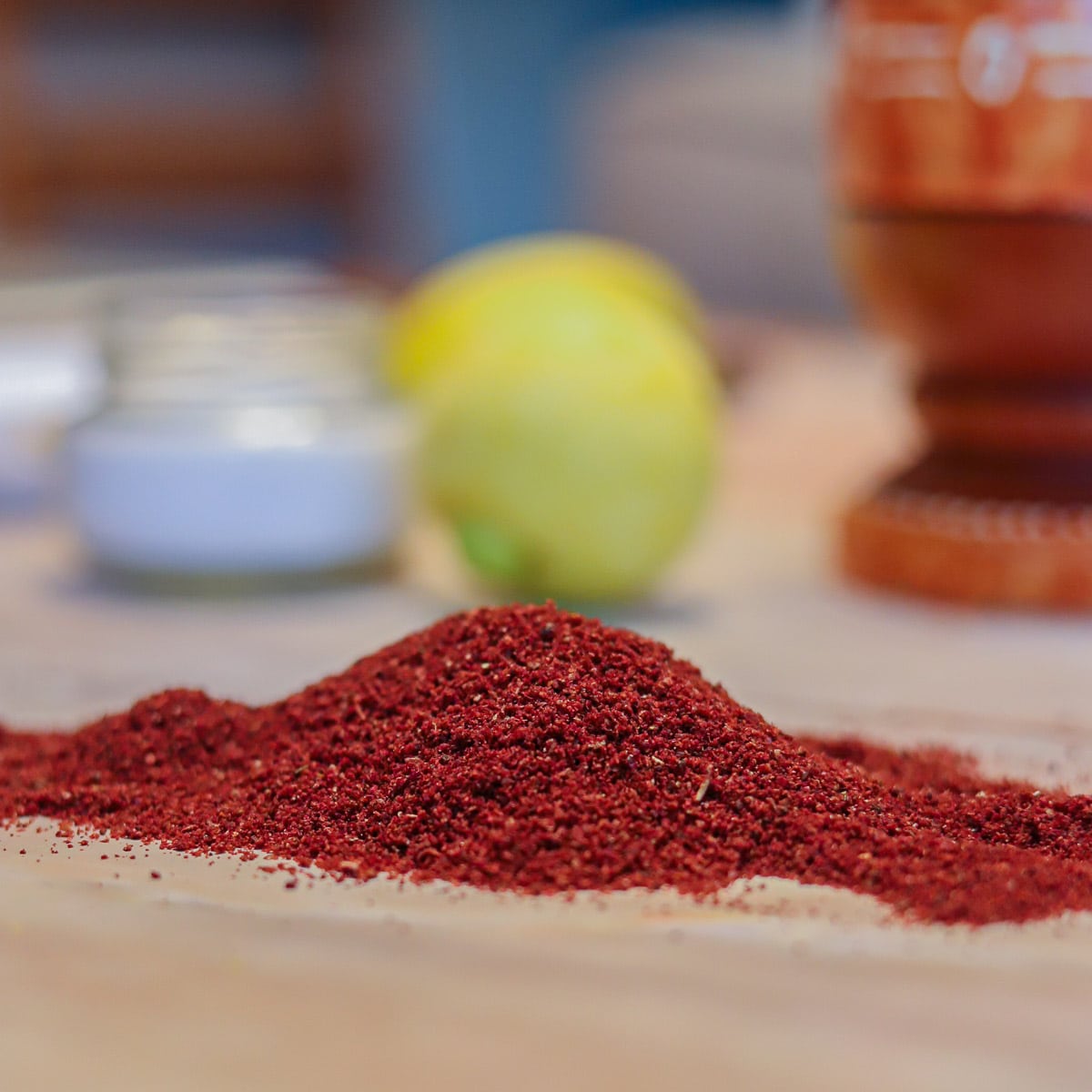
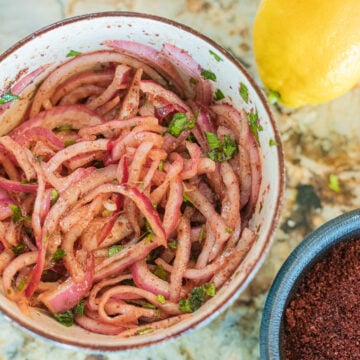



Peby says
Wow, I just know that there is poisonous sumac. Thank you, this is a great post!
Hilda Sterner says
Every time I serve sumac, my husband tells the guests it's "poison sumac." 🤦♀️
Peby says
I can imagine he's saying that :')